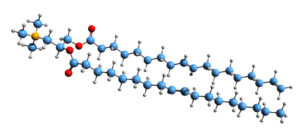In the realm of medical science, the development of innovative drug delivery systems has been crucial in enhancing the efficacy and safety of various treatments. Among these advancements, liposomal technology has emerged as a groundbreaking approach with the potential to revolutionize the way medications are delivered to the body.

This article aims to explore the world of liposomal technology, providing insights into its composition, advantages, applications, and future prospects.
- What are Liposomes? Liposomes are spherical vesicles composed of lipid bilayers, which closely resemble the natural cell membranes found in our bodies. The lipid bilayers encapsulate an aqueous core, creating a protective shell for the encapsulated substance, whether it is a drug, vitamin, or nutrient. This unique structure allows liposomes to act as efficient carriers, transporting therapeutic compounds to specific target sites in the body.
- The Advantages of Liposomal Technology: Liposomal technology offers several advantages over conventional drug delivery methods. Firstly, liposomes can protect encapsulated substances from degradation, improving their stability and extending their shelf life. Moreover, liposomes can enhance the bioavailability of drugs, allowing for more efficient absorption and utilization within the body. This improved bioavailability often results in reduced dosages and fewer side effects.
Another notable advantage of liposomal technology is its ability to target specific cells or tissues. By modifying the surface of liposomes, researchers can attach ligands or antibodies that recognize and bind to specific receptors on target cells. This targeted delivery enables precise drug administration, minimizing the impact on healthy tissues and reducing systemic toxicity.
- Applications of Liposomal Technology: Liposomal technology has found diverse applications across various fields, including medicine, cosmetics, and nutraceuticals. In the medical field, liposomes have been used to improve the delivery of chemotherapy drugs, antibiotics, and vaccines. For example, liposomal formulations of anticancer drugs have shown enhanced efficacy and reduced side effects, making them a promising approach in oncology.
Additionally, liposomes are being explored for the delivery of gene therapies and RNA-based therapeutics. The liposomal encapsulation protects these delicate molecules from enzymatic degradation, facilitating their safe and effective delivery to target cells.
Beyond medicine, liposomes have also been utilized in the cosmetic industry for the delivery of skincare ingredients. The liposomal encapsulation of vitamins, antioxidants, and moisturizers can enhance their penetration into the skin, maximizing their efficacy.
- Future Perspectives and Challenges: The field of liposomal technology continues to evolve, with ongoing research focused on improving liposome stability, scalability, and customization. Researchers are exploring novel liposomal formulations, such as pH-sensitive and stimuli-responsive liposomes, which can release their contents in response to specific environmental conditions or triggers.
However, there are still challenges to overcome. The large-scale production of liposomes can be complex and costly, limiting their widespread use. Moreover, maintaining stability and preventing the premature release of encapsulated substances during storage and transportation remains a significant hurdle.

Nevertheless, with advancements in nanotechnology and formulation techniques, these challenges are being addressed. Liposomal technology holds immense promise in personalized medicine, targeted therapies, and the treatment of various diseases.
Liposomal technology has opened up new possibilities in drug delivery, offering numerous advantages over conventional methods. The ability to protect, enhance bioavailability, and target specific cells or tissues makes liposomes an invaluable tool in medicine and other industries. While challenges exist, ongoing research and development in the field are likely to address these limitations, further expanding the applications and impact of liposomal technology.
Learn more at Wiki as well.